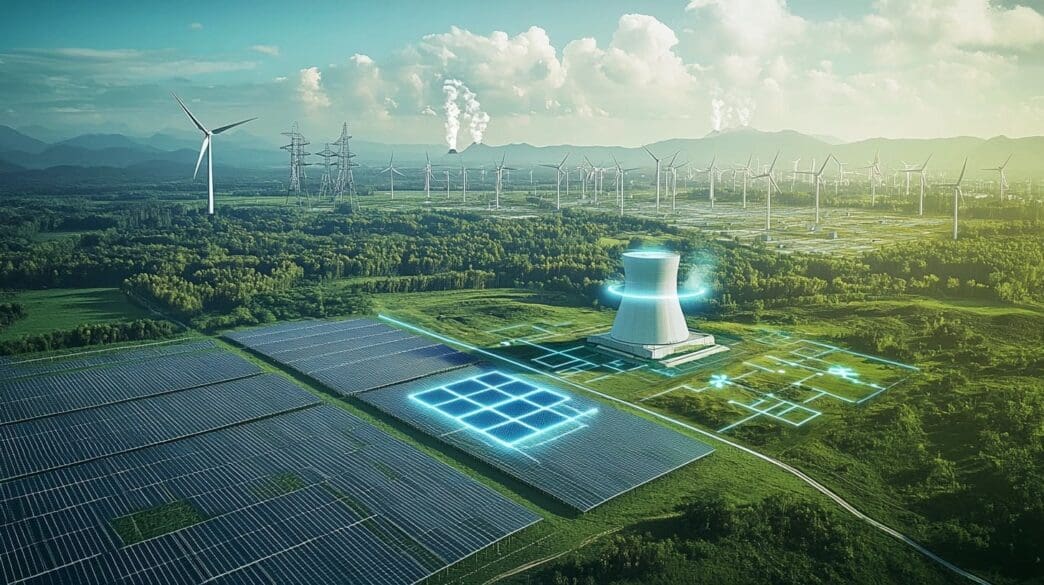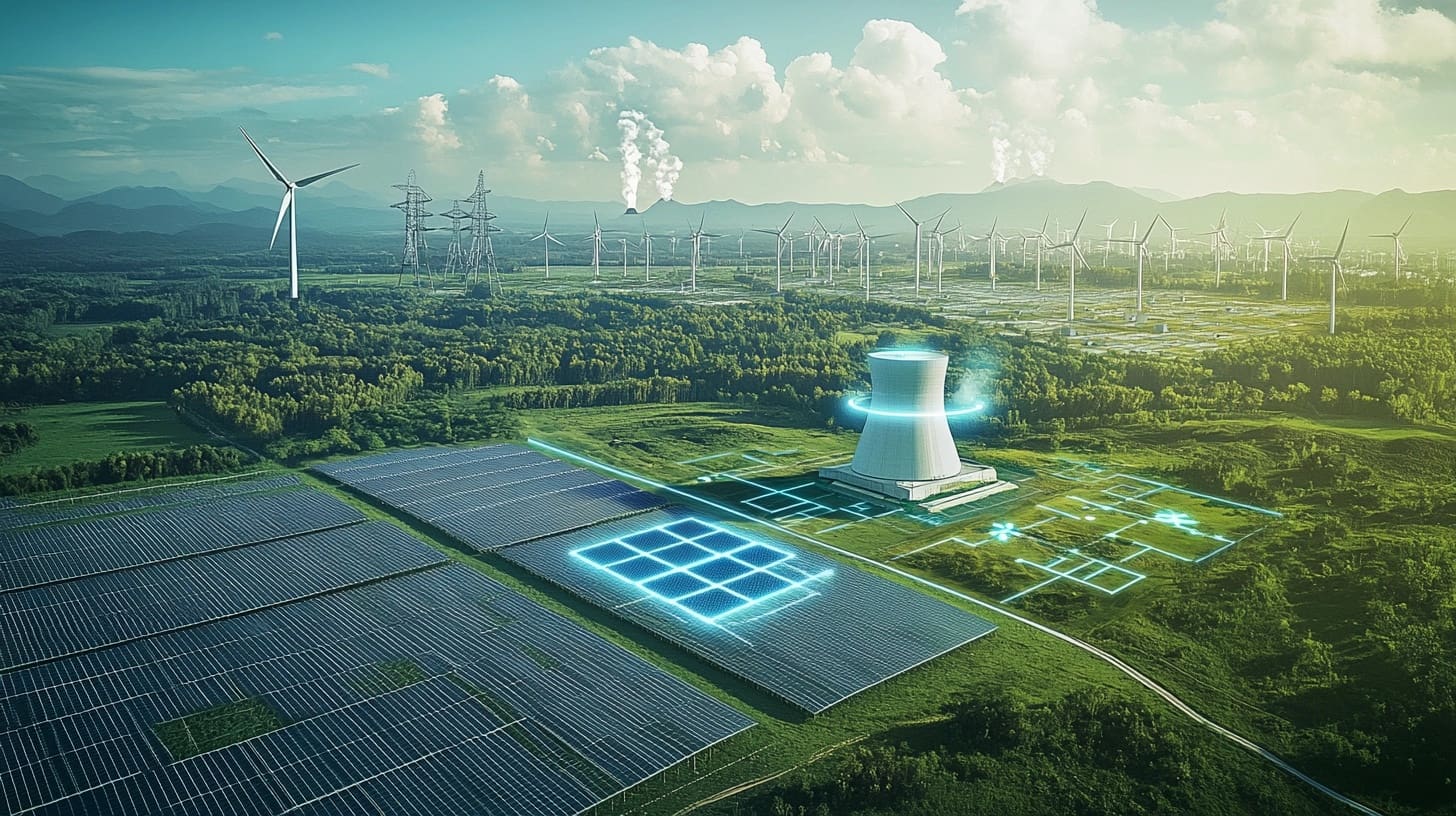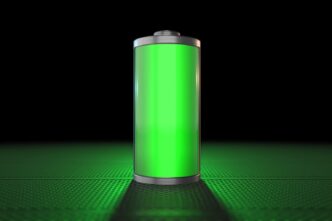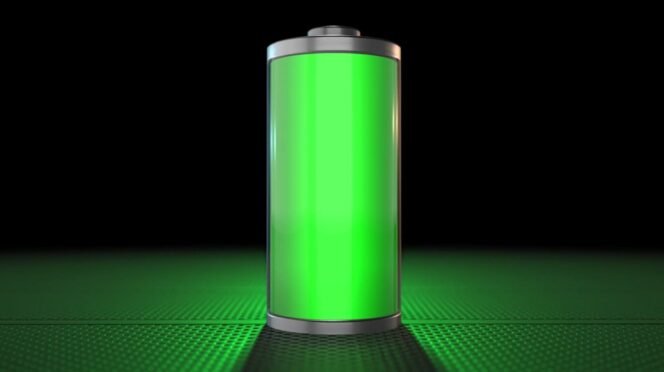Table of Contents Show
In the ongoing debate about sustainable energy sources, nuclear power often stands out as a controversial yet highly efficient option. This article delves into the comparative advantages of nuclear power over other forms of energy generation, particularly solar and wind power, focusing on key metrics such as capacity factor, land use, and power output.
Capacity Factor: Nuclear Power’s Unmatched Reliability
One of the most critical metrics in energy production is the capacity factor – the ratio of actual energy output to the maximum possible output over a given time. According to the U.S. Energy Information Administration (EIA), nuclear power leads the pack with an impressive average capacity factor of 93.1% in 2023.
| Energy Source | Land Area (square miles) | Capacity Factor |
|---|---|---|
| Nuclear | 1.3 | 0.933 |
| Solar PV | 62.5 | 0.233 |
| Wind | 140 | 0.335 |
| Amount of land (in square miles) required to produce 8.17 TWh of electricity (estimated amount produced by a single 1,000-MW nuclear plant in 2023 with a 93.3% capacity factor) for various “clean energy” sources. | ||
Figure 1: Capacity Factor Comparison Chart. This chart should be a bar graph comparing the capacity factors of Nuclear (93.1%), Wind (33.5%), and Solar PV (23.3%).
This high capacity factor translates to consistent and reliable energy production, a crucial factor in maintaining a stable power grid.
Power Output and Land Use Efficiency
Let’s compare the power output and land use efficiency of nuclear, solar, and wind power:
Nuclear Power
- A standard 1,000-megawatt (MW) nuclear power plant occupies approximately 1 square mile (640 acres) of land.
- With a 93.1% capacity factor, it can generate about 8.17 TWh of electricity annually.
- This is enough to power over 757,000 homes throughout the year.
Solar Power
- A 100-MW solar farm (assuming this as an average size) occupies about 1,000 acres of land.
- With a 23.3% capacity factor, it produces approximately 0.20 TWh of electricity annually.
- This can power just over 18,500 homes.
Wind Power
- A 200-MW wind farm with 80 turbines (2.5 MW each) requires about 6,400 acres (10 square miles) of land.
- With a 33.5% capacity factor, it generates about 0.59 TWh of electricity annually.
- This can power approximately 54,600 homes.
Figure 2: Land Use and Homes Powered Comparison Chart. This chart should be a dual-axis bar graph comparing land use (in acres) and homes powered for Nuclear (1000 MW), Solar (100 MW), and Wind (200 MW) installations.

Comparative Analysis
To match the power output of a single 1,000-MW nuclear reactor:
- Solar Power would require:
• Approximately 4,000 MW of installed capacity
• About 40,000 acres (62.5 square miles) of land - Wind Power would need:
• About 2,800 MW of installed capacity
• At least 1,120 utility-scale turbines
• Approximately 89,600 acres (140 square miles) of land
Environmental Considerations
While solar and wind power are often touted as environmentally friendly options, their extensive land use requirements raise important ecological questions. Nuclear power’s small footprint and high energy density make it an attractive option from a land conservation perspective.
Moreover, the calculations for solar and wind power don’t account for the additional land required for energy storage systems, which are necessary to manage the intermittent nature of these renewable sources.
Conclusion
The data presented clearly demonstrates the superior efficiency of nuclear power in terms of energy production, land use, and reliability. While all forms of energy production have their pros and cons, the sheer efficiency of nuclear power in generating large amounts of consistent, carbon-free electricity cannot be overlooked in discussions about sustainable energy futures.
As we continue to grapple with the challenges of climate change and increasing energy demands, a balanced and fact-based approach to energy policy is crucial. The remarkable efficiency of nuclear power suggests that it should play a significant role in any comprehensive strategy to meet our energy needs while minimizing environmental impact.
Sources:
- U.S. Energy Information Administration (EIA) – Capacity Factor Data (2023)
- U.S. Energy Information Administration (EIA) – Average Annual Electricity Consumption for U.S. Residential Customers (2022)
- Solar Energy Industries Association (SEIA) – Land Use for Solar Development
- American Clean Power Association – Solar Power Facts
- Landgate – Wind Farm Land Requirements














